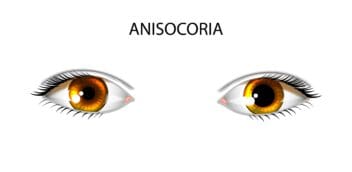Last Updated
Further Reading
- Exophthalmos
- Distorted Vision
- Chronic Uveitis
- Peripheral Vision Loss
- High Eye Pressure
- Eyelash Mites
- Shingles
- Eye Herpes
- Anisometropia
- Keratitis
- Eye Dilation
- Eye Infection Symptoms
- Eye Worms
- Macular Pucker
- Exotropia (Eye Misalignment)
- Do Eyelashes Grow Back
- Cyclopia
- Neosporin for the Eyes
- How Multiple Sclerosis Affects Your Eyes
- Ocular Myasthenia Gravis
- Horner’s Syndrome
- Cancer’s Effects on the Eyes
- States With the Worst Allergies
- How to Treat Swollen Eyes in Toddlers
- Retinal Disease Testing
- Central Retinal Vein Occlusion
- Scotoma (Blind Spot or Aura in Vision): Causes, Risk Factors and Treatment
- Convergence Insufficiency: What Is It, Symptoms and Treatments
- Squamous Cell Carcinoma of the Eyelid
- How HIV Affects the Eyes
- Corneal Arcus
- Emmetropia & Ametropia
- Chemosis Eye Irritation
- Cellulitis of the Eye
- Retinal Tears
- Rise in Myopia in Children During COVID-19
- Computer Vision Syndrome
- Conjunctivitis
- Blepharitis
- Chalazion
- Eye Discharge
- Fuchs' Dystrophy
- Pinguecula
- Scratched Cornea
- Subconjunctival Hemorrhage
- Uveitis
- Lazy Eye
- Nystagmus
- Ptosis
- Low Vision
- Eye PVD
- Retinal Detachment
- Tunnel Vision
- Diplopia
- Stargardt Disease
- Hyphema
- Styes
- Higher Order Aberrations of the Eye
- Coloboma
Guide to Uneven Eyes (Anisocoria): Causes & Treatment Options
Home / Eye Conditions & Eye Diseases /
Last Updated
Anisocoria, also called Adie’s tonic pupil or Adie syndrome, is described as uneven pupil size.
Table of Contents
It’s common to have pupils that are different sizes. In fact, it happens in about one in five people. While it is often a benign issue, it is also possible for it to be a symptom of a medical condition.

In benign cases where the issue just occurs for no apparent reason, no treatment is necessary. But if uneven pupils are the result of a medical condition, anisocoria treatment might be necessary. A doctor will perform an examination to determine if treatment is necessary.
What Is Anisocoria?
The black spot in the center of your eye is known as the pupil. For most people, the pupils react to light, either enlarging or shrinking equally. But for some people, the pupils are not always the same size. This is referred to as anisocoria.
By looking at the affected pupil, you can sometimes see that it is larger than the other pupil. It is also possible for the iris to experience depigmentation. This means that it starts losing its color and can become lighter.
In many cases, people do not notice that their pupils are unequal because the size difference is not significant. The doctor usually picks up on the problem when they are giving an eye examination.
In some cases, this condition is only temporary. But people can experience it on a regular basis too.
What Are the Possible Symptoms?
The underlying cause of this condition ultimately determines the other symptoms that a person experiences. Some examples of accompanying symptoms include the following:
- Blurry vision
- Vision loss
- Fever
- Neck stiffness
- Double vision
- Headache
- Nausea
When this issue occurs as a result of Adie syndrome, people often have poor or absent deep tendon reflexes too. When a doctor tests the person’s deep tendon reflexes using a small hammer, they either do not have any response or the response is poor. Facial pain, headache, and emotional fluctuations are also possible with this condition.
When Adie syndrome is present, it usually starts by affecting one pupil. Over time, it is possible for both of the pupils to be affected.
What Causes Anisocoria?
In many cases, when this issue is mild, there is no underlying cause. Some research suggests that mild anisocoria affects about 20 percent of the general population.
- When the issue is significant, multiple factors can cause it. Possible causes include the following:
- Iris inflammation
- Certain brain disorders and injuries, such as a stroke, brain tumor, brain hemorrhage, or infection in the brain
- Eye trauma from accidental injury or surgery
- Certain medications that go directly into the eye, such as glaucoma eyedrops like pilocarpine
- Seizures
- Concussion
- Optic nerve inflammation
- Aneurysm
- Hematoma on the brain
- Shaken baby syndrome
- Skull fracture
- Meningitis
- Acoustic neuroma
- Necrotizing vasculitis
- Glaucoma
- Low blood sugar
- Cataract surgery
- Increased intracranial pressure
- Diabetic oculomotor nerve palsy
Horner’s syndrome is another possible cause of anisocoria. It is characterized by a triad of symptoms, including pupil constriction that causes anisocoria, drooping eyelid, and not sweating in the area surrounding the affected eye. Most cases of this syndrome have an underlying cause, such as a tumor, stroke, or spinal cord injury. However, the cause is not always identified.
If an underlying cause is identified, treatment is aimed at this issue. There is not a treatment specific to Horner’s syndrome. For many cases of this condition, there is no known effective treatment.
Is This Condition Reversible?

Within two years, approximately 50 percent of people with anisocoria experience a full recovery. In some cases, the pupil that was once larger actually goes in the opposite direction and becomes smaller than the other pupil. Some people never experience full recovery of their pupillary response.
It is possible to experience partial function recovery if full recovery does not occur. This is more likely if the damage that occurred affected the ciliary body instead of the ciliary ganglion. Each of the ciliary ganglion has various dedicated fibers. This allows for a better chance at recovery of innervation to the controlling function of the lens compared to pupillary reactive function recovery.
Some experts note that the reinnervation can be segmental, irregular, and slow, which is correlated to how the symptoms of this condition occur.
Making a Diagnosis
If you notice that your pupils are unequal in size, see a doctor right away. It is important to get a prompt diagnosis because some of the causes of the issue are life-threatening.
Simply looking at how your pupils react to changes in light is usually enough to determine if this issue is present. Doctors may then perform multiple tests to figure out the underlying cause.
Blood testing is commonly performed if the potential cause is not readily apparent. The doctor usually starts with a blood differential and a complete blood count. These two tests offer significant insight into overall health. They can also point to meningitis, other types of infections, or bleeding somewhere in the body.
Imaging tests may be performed to look for injuries or abnormalities, such as a brain tumor. The following tests might be considered:
- A CT scan of the head to ensure that the anatomy looks normal
- X-rays of the neck to look for issues like tumors
- An MRI scan of the head to get a more detailed look at the brain and skull
If seizures or similar issues are suspected, the doctor might order an electroencephalogram. The purpose of this test is to measure the brain’s electrical activity. If you have glaucoma, the doctor might recommend you undergo tonometry testing.
When imaging and blood testing do not provide a definitive diagnosis, the doctor might consider a lumbar puncture. Doctors can then evaluate the spinal fluid to look for infection, neurologic disorders, and other issues affecting the spinal cord and brain. In addition, the test explores pressures within the cerebrospinal fluid.
What Are the Anisocoria Treatment Options?
Anisocoria treatment is mostly focused on the underlying cause. For example, if a seizure caused uneven pupils, a treatment regimen to control seizures will likely be implemented.
Treatment for anisocoria itself is usually not necessary. However, bifocals or reading glasses may be beneficial if uneven pupils cause unequal accommodation.
With benign cases of this condition, a doctor might recommend photochromic lenses. These are lenses in eyeglasses that darken automatically when you go out into sunlight. This may help to alleviate light sensitivity. They also provide some protection from high-energy blue light and the sun’s ultraviolet rays.
Some of the causes of uneven pupils are preventable. Take these preventative measures to potentially avoid the issue:
- Wear a helmet during contact sports or when riding a bike.
- Always wear a seatbelt.
- Report any sudden vision changes immediately to a doctor.
- Always wear appropriate protective gear when using heavy machinery.
If you experience uneven eyes, talk to your doctor about possible solutions. They can evaluate the issue, determine the cause, and provide treatment options that are specific to your individual case.
References
- Adie’s Pupil. Encyclopedia.
- Adie Syndrome. National Organization for Rare Disorders.
- Anisocoria: Why Is One Pupil Bigger Than the Other? (June 2017). All About Vision.
- Anisocoria Diagnosis and Treatment. (May 2019). American Academy of Ophthalmology.
- Horner’s Syndrome. Genetic and Rare Diseases Information Center.
- Anisocoria Treatment and Management. (December 2018). Medscape.
- Photochromic Lenses: Transitions and Other Light-Adaptive Lenses. All About Vision.
- Cerebral Spinal Fluid (CSF) Collection. MedlinePlus.
The information provided on this page should not be used in place of information provided by a doctor or specialist. To learn more, read our Privacy Policy and Editorial Policy pages.
Further Reading
- Exophthalmos
- Distorted Vision
- Chronic Uveitis
- Peripheral Vision Loss
- High Eye Pressure
- Eyelash Mites
- Shingles
- Eye Herpes
- Anisometropia
- Keratitis
- Eye Dilation
- Eye Infection Symptoms
- Eye Worms
- Macular Pucker
- Exotropia (Eye Misalignment)
- Do Eyelashes Grow Back
- Cyclopia
- Neosporin for the Eyes
- How Multiple Sclerosis Affects Your Eyes
- Ocular Myasthenia Gravis
- Horner’s Syndrome
- Cancer’s Effects on the Eyes
- States With the Worst Allergies
- How to Treat Swollen Eyes in Toddlers
- Retinal Disease Testing
- Central Retinal Vein Occlusion
- Scotoma (Blind Spot or Aura in Vision): Causes, Risk Factors and Treatment
- Convergence Insufficiency: What Is It, Symptoms and Treatments
- Squamous Cell Carcinoma of the Eyelid
- How HIV Affects the Eyes
- Corneal Arcus
- Emmetropia & Ametropia
- Chemosis Eye Irritation
- Cellulitis of the Eye
- Retinal Tears
- Rise in Myopia in Children During COVID-19
- Computer Vision Syndrome
- Conjunctivitis
- Blepharitis
- Chalazion
- Eye Discharge
- Fuchs' Dystrophy
- Pinguecula
- Scratched Cornea
- Subconjunctival Hemorrhage
- Uveitis
- Lazy Eye
- Nystagmus
- Ptosis
- Low Vision
- Eye PVD
- Retinal Detachment
- Tunnel Vision
- Diplopia
- Stargardt Disease
- Hyphema
- Styes
- Higher Order Aberrations of the Eye
- Coloboma